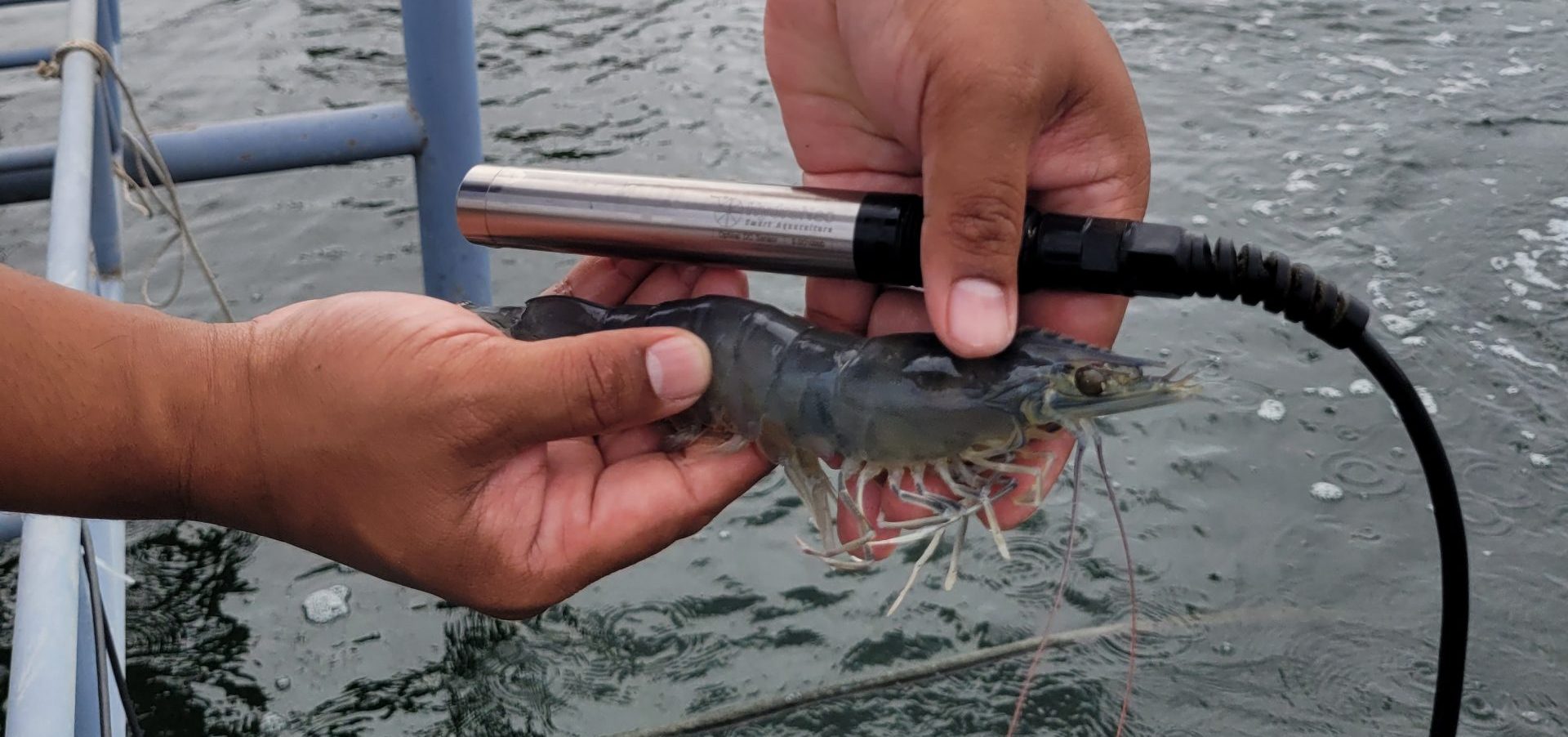
The vital role of dissolved oxygen sensors in Shrimp farming and Aquaculture
In 2018, a tilapia farm in Ghana faced a sudden and massive die-off, forcing it to shut down. Investigation led to the discovery of a specific bacterium, suspected to be related to drastically low levels of dissolved oxygen in the water.
From the above case, you can imagine that the Dissolved oxygen (DO) concentration is crucial for the aquatic creatures’ survival. And if we talk about shrimp farming it’s no secret amongst the aquaculture industry that shrimp are one of the most delicate species.
Even though the atmosphere contains about 21% oxygen, it’s a whole different story in the shrimp pond. Underwater, the dissolved oxygen saturation level in water is 25 times lower than in the ambient air for the same temperature therefore Aquatic animals need more energy to breathe compared to terrestrial animals. The ability of oxygen to dissolve in water depends on atmospheric pressure, temperature, and water salinity. Oxygen dissolves more in water when temperature and salinity decrease.
Why we should pay attention to maintaining the optimal dissolved oxygen in Shrimp farming?
– To ensure the feeding and digestion of the shrimp. Proper oxygen levels aid in digestion and nutrient absorption, helping them grow healthily.
– Your shrimp will be disease-resistant. Adequate oxygen levels boost their immune systems, making them resilient against diseases.
– To improve the survival rates. Higher dissolved oxygen levels, especially in high-density shrimp farming will enhance survival rates.
– Make your shrimp more toxin tolerant. Shrimp can cope better with toxins like ammonia, nitrite, and hydrogen sulfide if they’re healthy and always have the optimum dissolved oxygen in the pond.
– To increase its adaptability to environmental change, as shrimp are prone to stress easily when changing the environment. Optimum oxygen levels will help them adapt quickly to changing environmental conditions.
– It supports the growth of beneficial bacteria like Bacillus spp. and Nitrifying Bacteria. These bacteria will help to maintain good nutrition and get rid of the toxins that accumulate in the shrimp pond.
Why the Shrimp farmers should adopt the water quality checking technology into their farming?
Because monitoring dissolved oxygen in shrimp farming is crucial. Leaving your shrimp in low-oxygen conditions can cause significant loss, shrimp farmer could lose all their crops and that means zero benefit for that cycle. Especially for high-intensity shrimp farming, the more intensity you stock your shrimp the more oxygen consumption in the shrimp pond will be needed. The other reason to support why water quality monitoring is vital is during the night time the oxygen level usually drops rapidly. Without a proper plan and water quality monitoring technology it’s very risky.
You could say that the old-fashioned way of water quality checking has been practiced regularly in your shrimp farm. However, sometimes it can be a hassle because of many factors like the manual water quality checker isn’t accurate and you can’t rely on the farm workers all the time as they are human beings and they might have forgotten, or it’s difficult for them to get up at 3am to check the dissolved oxygen level in the shrimp pond.
This is where dissolved oxygen sensors come to the rescue in shrimp farming
Leveraging IoT (Internet of Things) technology with dissolved oxygen sensors allows us to measure oxygen levels in the pond with real-time value and accuracy. It’s more efficient and convenient.
There are two popular types of dissolved oxygen sensors, here’s a summary of it:
Galvanic Sensors: They’re affordable but require constant water current and frequent calibration with buffer solutions, causing membrane fouling when in water for a long time.
Optical Sensors: Optical sensors are the cutting-edge technology at this moment. It can measure the dissolved oxygen in the water without the currents and with no hassle of using any buffer solution.
The way it works is that it employs light to gauge dissolved oxygen levels.
Calibration is even easier, and you can even measure oxygen levels even when the sensor is not in the water.
These optical dissolved oxygen sensors allow prompt oxygen management, minimizing losses due to low oxygen levels which is the most common issue in shrimp farming. They provide accuracy, stability, and easy maintenance, making water quality management
Integrating a Smart Farming system from HydroNeo with high-quality dissolved oxygen sensors brings you a real-time water quality checker 24/7 through a user-friendly app. Want to know more? Contact…

